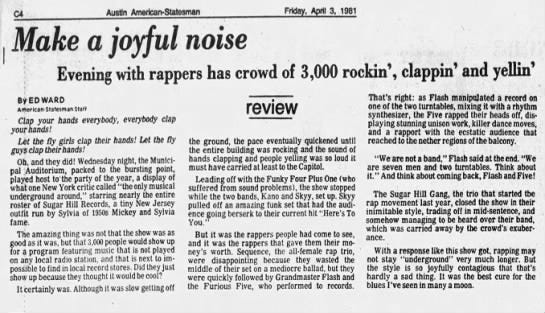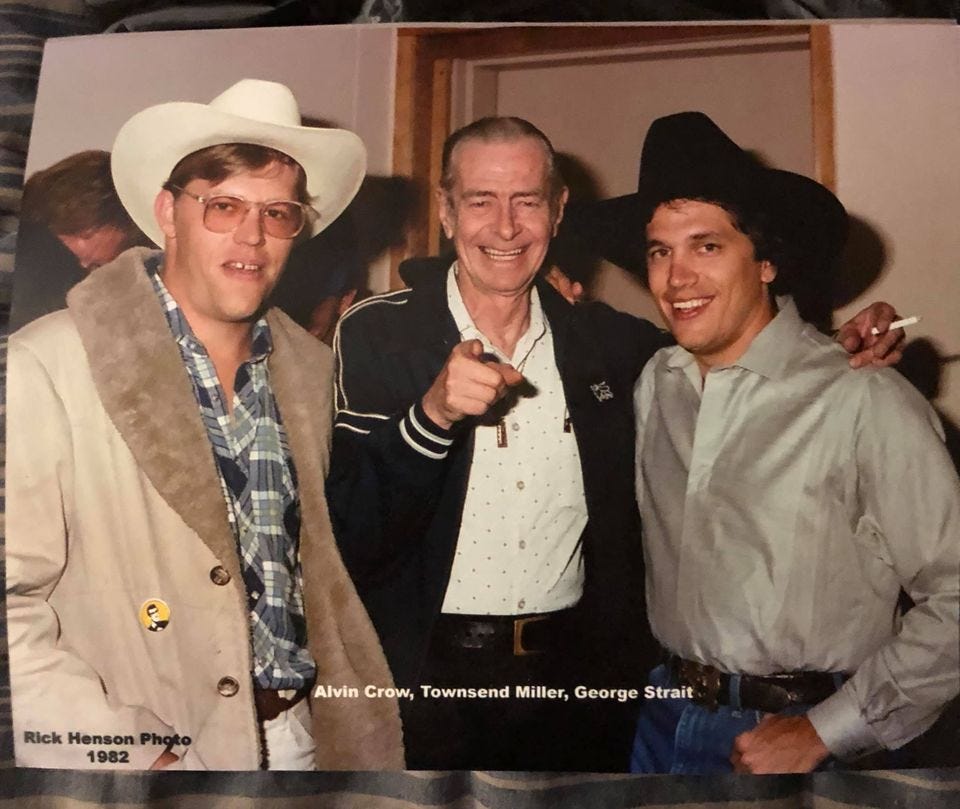April Fools Day in Austin music history
I moved to Austin 39 years ago today, an event that somehow isn't the most significant April 1
There’s nothing like the first stroll in your new town, which for me and Austin was Sunday, April 1, 1984. I was walking down South Congress (which wasn’t nearly as seedy back then as developers will have you believe), when I happened upon the grand opening of the costume store Lucy in Disguise with Diamonds. Interesting folks. Free wine. Cool town!
Next stop was the Continental Club, where the sign read, “Butthole Surfers $4.” Worth a shot? Was it ever! Not many people have seen the Butthole Surfers without knowing a thing about them. This was before all the visual insanity- the penis re-attachment films and the flaming cymbals and the stripper who covered her teeth in aluminum foil. It was just the music, and it was both abrasive and hypnotizing. My brain was locked in on the primal stand-up pounding of Teresa and King, and I’ve been chasing that rhythm ever since.
More notable April 1s:
April 1, 1977: Esther’s Follies opens at 515 E. Sixth Street. Shannon Sedwick and husband Michael Shelton, who were running Liberty Lunch at the time, threw a grand opening party for their new Sixth Street dive and it turned into an impromptu free-for-all, with comedy, music and dancing from creative folks coming in off the street. The night ended with synchronized movements around a lawn sprinkler in tribute to aquatic-choreographer Esther Williams.
April 1, 1981: Austin’s first punk club Raul’s closed for good on the night hip hop made its live concert debut here.
The first rap concert in Austin was the last one at Municipal Auditorium before it became Palmer. A package show featuring Sugarhill Gang, Grandmaster Flash, Funky Four Plus One and the bands Kano and Skyy drew 3,000 fans on a Wednesday night. You can’t more succinctly define when rap replaced punk as the sound of rebellion, in Austin and around the world.
There wouldn’t be another concert by a national rap act until four years later when the Beastie Boys opened for Madonna at the Erwin Center (and were booed off the stage).
The golden era of hip-hop introduced itself to Austin audiences six weeks later, on June 19, 1985 when Run-DMC played a delirious Juneteenth show at Liberty Lunch. The crowd was half black, half white, and 100% out their damn minds.
April 1, 1982: Waterloo Records opens on S. Lamar.
Waterloo was in a building the width and length of an automated car wash, because that’s what it was for 30 years at 221 S. Lamar. Partners Louis Karp and John Kunz ran their 1,200-sf shotgun shack on customer service and trust. It was a unique indie record store because it was organized, like a chain store, but funky: Sam Goody wearing Mardi Gras beads.
Karp opened Waterloo by himself on April 1, 1982, but Kunz, who quit his record store job in Highland Mall that same day, was there so often- bouncing ideas off Karp- customers figured he worked there. Soon he did and in October ’82, Kunz became Karp’s partner.
Karp left in ‘87 to work in store management for Whole Foods, and Kunz moved Waterloo to a bigger space, five times the size, at the corner of Sixth and North Lamar. That was one of downtown’s first retail centers- and look at that corner now!
April 1, 1989: The death of outlaw country’s Walter Winchell.
Townsend Miller, who chronicled the ‘70s country scene in Austin with great knowledge and enthusiasm, was found dead on the ground outside his car at 5 a.m. He had parked on dry grass near Fiesta Gardens, and it’s believed that his catalytic converter started a fire. Cause of death was smoke inhalation. His last stop of the night was at Raven’s Garage (later Emo’s) where he complained to a loading-out Gary P. Nunn that he’d had recurring hiccups for about six months. He may have pulled over on the grass that night to try one of the many remedies suggested on Sammy Allred’s KVET show that week.
A stockbroker by day, Townsend wrote his Statesman column, pro bono, from ‘72- ‘83. He’d come home from Merrill Lynch, take a three-hour nap, and then hit the clubs, dapper and refreshed, five nights a week. In one pocket was that night’s itinerary on an index card. In another was a flask of vodka, with a touch of creme de menthe for his breath. He’d hit as many as five clubs nightly, in “the capital of cosmic strum and twang.”
Here’s the prophetic column he wrote on the eve of Willie Nelson’s historic debut at hippie haven Armadillo World Headquarters:
Everybody loved the everywhere man, an avid fisherman who moved to Austin after serving in WWII to edit Texas Fish & Game. “I think what he enjoyed most was seeing the renewed interest of youth in country music and how it brought young and old together,” son Kent Miller told the Statesman in his father’s April ’89 obituary. He was 69 and lived as full a life as imaginable, survived by wife Rita and four kids. Really important to the development of the Austin music scene, Miller is the reason Willie Nelson called his annual Fourth of July affairs “Picnics.” In reviewing the 1972 Dripping Springs Reunion, Miller called it “an all-day picnic with singing on the grounds,” paraphrasing a bluegrass gospel standard. Willie’s Picnic debuted the next year on the same Hurlbut Ranch location as the Reunion.
History holds gratitude for Townsend Miller and Armadillo house photographer Burton Wilson, the old guys who got it all down when the youngsters were getting down.








I went to the Armadillo one time back in 1973 with a girl I was hopelessly in love with but she was only in "like" with me. We drove down from Baylor University to catch The New Riders of the Purple Sage with Roger McGuinn as the opener. I still have the t-shirt.
I remember Townsend Miller a fine talent I read often -he was part of Austin’s crossover for me genres covering a lot back then -I was at UT in the 1970s a lil pre dating your arrival when the Armadillo brought in a lot of different bands and their own locals Austin then was different a lil more laid back